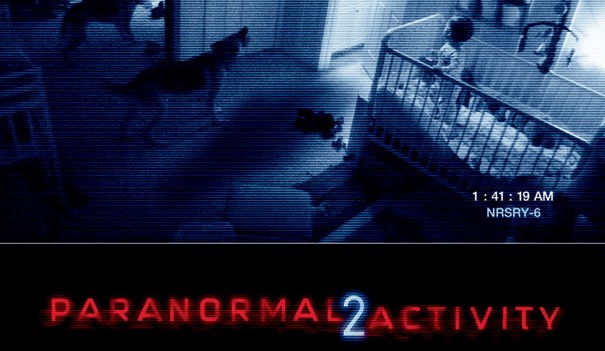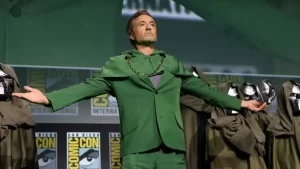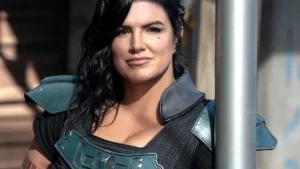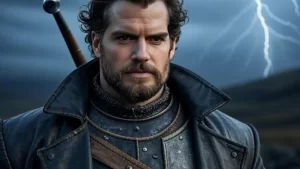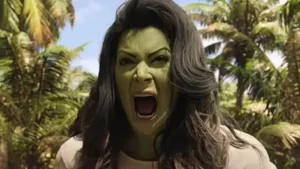The true test of all horror sequels is how well it connects to the previous films. Loose and contrived connections result in a rapid de-saturation of the original story (see the Saw series). Strong connections build and expand the story’s mythos (see The Ring films). Traditionally, the horror genre has not been particularly successful at making sequels. We have plenty of evidence of 80s slasher films in Nightmare on Elm Street and Friday the 13th to reference in this regard. The main reason for this is that horror films since the late 70s and 80s have been produced with the specific intention of delivering quick hitting shocks and screams to an audience. These amount to nothing more than cheap thrills and almost never equate to an absolute absorption into fear as produced in an Alfred Hitchcock film, for instance. Of course, Hitchcock never relied upon the gimmicks of ghosts and monsters as his settings for inducing fear were set in ordinary Americana and driven by extremes in human behavior that yielded realistic threats to any person being caught in a similar “what if” scenario.
But what if a more realistic bridge could be built between the monster/ghost angle and the realism of true Hitchcock-ian fear? Films like The Blair Witch Project (1999), Cloverfield (2008), and the first Paranormal Activity (2007) attempted to do this by exploiting the contemporary world’s familiarity with the “documentary style,” handheld camcorder perspective. Most everyone in the first world has had an opportunity to shoot home movies, or watch them, as just about everyone has a cell phone – and all of those are equipped with pretty reliable surveillance capability. The home movie format puts an audience at ease because rational people don’t believe in ghosts and goblins, but if one were to appear in that type of visual recording, it pulls the rug out from under us all. In theory, this level of realism ought to have delivered a larger fear impact than these types of films have been able to produce and there are very real reasons that explain why they have not. The first is that most people find “home movie” style camera work to be displeasing. The ability to focus on the action or some point of interest in the frame is not easy because the content of the frame is seemingly random and undefined. The second reason is that this sub-genre of horror films continues to display a vast weakness in developing character and consequently, any form of connection to and sympathy with an audience. If an audience cannot connect personally with some aspect of a character on the screen, do we care if he or she is being terrorized?
Paranormal Activity 2 tries to address these issues by upping the realism and limiting the jarring handheld camera. Most of the footage that weaves the fiction is coming from a series of stationary surveillance cameras distributed throughout the house of another family that has been targeted for haunting. The story, as well written by Michael Perry, Christopher Landon and Tom Pabst, does a very good job to justify the introduction of such intruding surveillance under the rationale guise of “added security.” These multiple, stationary wide shots give the audience no excuse for a lack of focus. In addition, these static cameras give the audience a fuller sense of the physical space throughout the house giving us a greater appreciation for how much or little separation the characters have from some malevolent force. When something “happens” on the screen the audience is genuinely surprised, but is often tipped off by the familiar sound of bass reverberation that preceded any paranormal activity from the first film. I credit director Tod Williams with retaining the visual and sound effects that were established in the first film which adds an additional layer of credibility to the fiction of the sequel.
There are inconsistencies in the commitment to the realism of the illusion in Paranormal Activity 2. The film does not begin with any traditional series of credits so as to enhance this false reality. It begins with a graphic stating that “Paramount Pictures would like to thank the families of . . . for releasing this footage.” Using the name of some other authoritative form like the FBI or law enforcement of ABC/XYZ county “would like to thank,” would have been a more effective means of messing with the audience’s sense of reality. Seriously, if you caught ghouls attacking your family on video, would you hand over this footage to a Hollywood film company first?
This film starts off as somewhat of a prequel to the events of the first Paranormal Activity and steps are taken to give the audience a frame of reference for the relevance of the video footage. As the footage is displayed, graphics appear to affirm the dates and times of the unfolding events and at what point they correlate with the events of the first film. For instance, the very first footage you see is referenced as “60 days before the death of Micah Sloat.” This is somewhat of a good thing because there is no way anyone remembers the dates and times from the first film and therein lays another weakness to the illusion of realism. Comprehending the timing of the footage in PA2 is VITAL to understanding the overall story. In hindsight, there isn’t a more effective means of making moment to moment reference points to a previous film, but using this strategy tends to telegraph when something else is going to happen on screen to the audience.
Not long into Paranormal Activity 2 does the audience find the direct connection to the first film when it is revealed that the wife of the family being haunted happens to be the sister of Katie, played by Katie Featherston in PA1. There is plenty of video footage establishing the relationships between Katie and her sister’s family in addition to brief cameos by Micah prior to any weirdness occurring to either sister. A little more of the overall back story is presented in this sequel in addition to a decent amount of exposition via camera confessionals between the sisters and the online research about the alarming phenomena conducted and documented by the step-daughter in the sister’s family. These moments are not just necessary to ease the ever building tension, but are quite satisfying in that they add much more meat to the plot of a seemingly random haunting in the first Paranormal Activity.
The strength of the sequel was the same for the first film: the climax. It is in this moment where the grand purpose for everything one has seen in both Paranormal Activities is revealed with a little creativity and prognostication on the part of the viewer. The window for a third sequel is left wide open as we are witnesses to the events that immediately follow the end of the first film and are compelled to find out what could possibly happen after.
Paranormal Activity 2 is a horror film that tests the limitations of one’s ability to suspend disbelief. Those who go into horror films with the intention of debunking the proposed validity of the fiction will not enjoy this film nor will those who did not appreciate the first. All of the connections that this sequel shares with the previous film are solid, make practical sense within the framework of the established fiction and keeps the audience familiar with the unknown antagonist(s) which are unfortunately identified by some of the same effects used in PA1. This was a necessary evil because if the fiction is trying to maintain consistency of the same supernatural threat, it doesn’t make sense to show apparitions materializing on screen when that hasn’t occurred before.
I did not like how this franchise continues to establish women as being exclusively attuned to the realm of unexplained phenomena and men as reliable cynics. I distinctly remember Scully and Mulder occupying the opposite roles in The X-Files. I also did not believe some of the reactions by the characters experiencing that kind of unexplained activity in their home. Simply ignoring and wishing for “it” to go away has a much shorter shelf life than most would admit. The DVR home security footage is not reviewed by the family nearly as often as Micah reviewed the footage from his own camera in the first film. The continued non-involvement or an attempt to even contact any form of law enforcement continues to frustrate and confound me. Every other aspect of the realism of the proposed scenario of Paranormal Activity 2 gets me so emotionally charged that I am screaming “Call 911!” inside my mind by the middle of the film.
Regardless of its shortcomings, Paranormal Activity 2 kicks off the horror season on a positive note. Adding more “victims” by way of children, pets, and more bodies actually adds tension to a haunting scenario that had previously played up the isolation fear by a solitary couple in the first. Staring at long takes of footage in anticipation of something unexplainable on video continues to be the unique and satisfying signature of this franchise. The level of realism and believability of the story and visuals is high, yet inconsistent as relying on the ever-building sense of tension is relied upon to cover up plot gaps. This was an especially chilling experience as I saw this film in a completely deserted theatre. If given the opportunity, I’d recommend the same to all of you.

